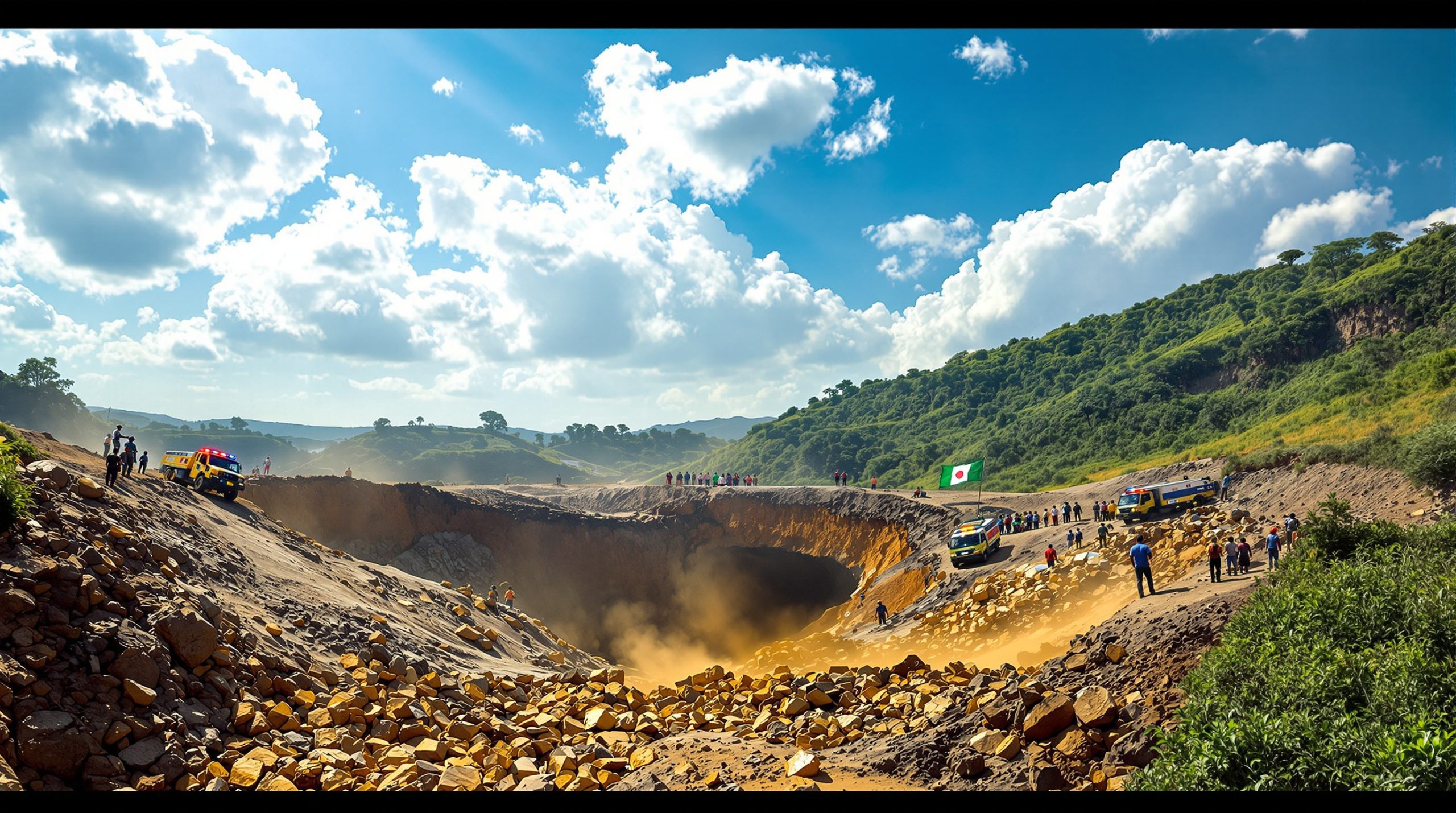Understanding Indonesia's Mining Permit Suspensions: Reclamation Requirements and Compliance
Indonesia's mining sector has experienced a significant regulatory shakeup with the suspension of 190 coal and mineral mining permits. This sweeping action by the Indonesian government represents a firm stance on environmental compliance, particularly regarding land reclamation and rehabilitation requirements. The suspensions target companies that have failed to meet their obligations for establishing adequate reclamation funds and implementing proper land restoration plans.
What Led to Indonesia's Recent Mining Permit Suspensions?
The Indonesian Mining Ministry's decision to suspend 190 coal and mineral mining permits stems from persistent non-compliance with environmental regulations. According to recent reports from Reuters, these suspensions specifically target companies that failed to fulfill their obligations regarding land reclamation fund deposits and the rehabilitation of mine-damaged land. Additionally, non-compliance with production quotas contributed to the regulatory action.
Key Factors Behind the Suspension Decision
- Widespread failure to deposit mandatory reclamation funds in government-approved accounts
- Inadequate or missing land rehabilitation plans for areas affected by mining operations
- Repeated disregard for environmental regulations despite multiple warnings from authorities
- Non-adherence to production quotas and operational guidelines established by the Mining Ministry
These suspensions reflect Indonesia's increasing focus on sustainable mining practices and environmental protection. The country's rich natural resources have long been exploited, often with insufficient attention to mine reclamation importance, leading to the government taking this decisive action to enforce compliance.
How Does Indonesia's Mining Reclamation System Work?
Legal Framework Governing Mining Reclamation
Indonesia has established a comprehensive legal structure to ensure mining operations include proper environmental protection and restoration measures. This framework creates clear obligations for mining permit holders regarding how they must prepare for and execute land reclamation.
The system is built on several key regulatory pillars:
- Government Regulation No. 78/2010: This foundational regulation establishes the basic requirements for post-mining reclamation activities
- Ministerial Regulation No. 26/2018: This provides detailed guidance on specific obligations for mining permit holders
- Mining Law Amendments: Recent updates have strengthened environmental protection provisions and enforcement mechanisms
Reclamation Fund Requirements
The reclamation fund system serves as a financial guarantee mechanism to ensure companies have resources available for environmental restoration work:
- Mandatory Deposits: Companies must place funds in government-approved accounts before mining operations commence
- Progressive Funding: Additional deposits are required as mining activities expand into new areas
- Fund Calculation: Deposit amounts are calculated based on the scope of environmental impact and projected rehabilitation costs
- Government Oversight: Regular audits ensure fund adequacy and compliance with deposit schedules
This financial guarantee system is designed to prevent situations where mining companies abandon sites without completing necessary reclamation work, leaving environmental damage unaddressed.
What Are the Consequences of Permit Suspensions?
Immediate Operational Impacts
The suspension of mining permits creates significant operational challenges and financial pressures for affected companies:
- Production Halts: All extraction activities must cease immediately during the suspension period
- Revenue Losses: Companies face substantial financial impacts from production interruptions
- Compliance Costs: Additional expenses to meet reclamation requirements and address regulatory issues
- Reputational Damage: Potential loss of investor confidence and stakeholder trust
These immediate impacts create strong incentives for companies to quickly address their compliance issues.
Environmental Responsibilities During Suspension
Despite the suspension of mining activities, companies retain important environmental obligations:
- Site Maintenance: Continued responsibility for managing existing mining areas to prevent further degradation
- Environmental Monitoring: Ongoing obligation to monitor potential environmental impacts from previous operations
- Hazard Prevention: Requirements to prevent any environmental deterioration at suspended sites
- Regulatory Reporting: Maintaining communication with regulatory authorities about site conditions
These ongoing responsibilities ensure that environmental protection remains a priority even during suspension periods.
Which Regions Are Most Affected by the Suspensions?
Geographic Distribution of Suspended Operations
The mining permit suspensions affect operations across Indonesia's resource-rich regions, with particular concentrations in several key areas:
| Region | Mining Type | Impact Level | Primary Compliance Issues |
|---|---|---|---|
| East Kalimantan | Coal | High | Inadequate reclamation funds |
| Central Kalimantan | Coal | Moderate | Incomplete rehabilitation plans |
| Southeast Sulawesi | Minerals | Substantial | Multiple regulatory violations |
| Central Sulawesi | Minerals | Notable | Environmental compliance failures |
These regions represent some of Indonesia's most significant mining areas, particularly for coal extraction, which comprises a substantial portion of the country's resource exports.
Environmental Significance of Affected Areas
The regions most impacted by the suspensions contain ecologically sensitive areas that highlight the importance of proper reclamation:
- Biodiversity Hotspots: Many operations border protected forests and wildlife habitats with unique ecological value
- Watershed Areas: Critical water resources affected by mining activities, impacting both water quality and availability
- Agricultural Lands: Farming communities dependent on land rehabilitation for continued food production
- Coastal Zones: Mining runoff potentially affecting marine ecosystems and coastal livelihoods
These environmental factors underscore the importance of proper reclamation and the potential ecological consequences of non-compliance.
How Can Companies Regain Their Mining Permits?
Compliance Requirements for Reinstatement
The Indonesian Mining Minister has clearly outlined the path for companies to have their suspensions lifted. According to the recent Reuters report on Indonesian mining suspensions, companies must fulfill their obligations related to land reclamation fund deposits to regain operational permissions.
The reinstatement process typically involves:
- Reclamation Fund Deposits: Placing the required financial guarantees in designated government accounts
- Rehabilitation Plan Submission: Developing and submitting comprehensive land restoration strategies
- Environmental Impact Assessment: Updating environmental management documentation
- Regulatory Consultation: Working with authorities to ensure full compliance with all requirements
Timeframe for Potential Reinstatement
Companies have a limited window to address their compliance issues:
- 60-Day Maximum Suspension: The initial suspension period typically cannot exceed two months
- Immediate Reinstatement Option: Permits can be restored as soon as requirements are met
- Permanent Revocation Risk: Failure to comply within the suspension period may lead to complete permit cancellation
- Graduated Response: Authorities may implement a phased reinstatement based on compliance progress
This time-limited approach creates urgency for companies to address their environmental obligations promptly.
What Does This Mean for Indonesia's Mining Sector?
Regulatory Trend Analysis
The recent suspensions reflect a broader shift in Indonesia's approach to mining regulation:
- Increasing Enforcement: Stricter application of existing environmental regulations with real consequences
- Regulatory Expansion: New rules covering more aspects of mining operations, particularly environmental impacts
- Compliance Prioritization: Greater emphasis on environmental responsibilities throughout the mining lifecycle
- International Alignment: Moving toward global best practices in mining permitting insights and sustainability
These trends signal a fundamental shift in how Indonesia intends to manage its natural resources moving forward.
Industry Adaptation Strategies
The mining sector is responding to the changing regulatory landscape with several strategic approaches:
- Proactive Compliance: Leading companies are exceeding minimum requirements to avoid regulatory issues
- Technology Investment: Adoption of advanced reclamation techniques to improve restoration outcomes
- Stakeholder Engagement: Increased communication with communities and regulators to build trust
- Sustainability Integration: Embedding environmental considerations into operational planning from project inception
These adaptation strategies reflect the industry's recognition that environmental compliance is becoming a fundamental requirement for continued operations in Indonesia.
How Does This Compare to Previous Regulatory Actions?
Historical Context of Mining Regulations
Indonesia's current enforcement actions build upon a history of evolving mining regulations:
- Pre-2009 Era: Limited environmental requirements with minimal enforcement mechanisms
- 2009 Mining Law: Introduction of stronger reclamation provisions and compliance expectations
- 2014-2020 Amendments: Progressive strengthening of environmental obligations through legal updates
- Current Enforcement Wave: Unprecedented scale of compliance actions affecting multiple companies
This historical progression shows Indonesia's gradual but consistent movement toward stronger environmental protections in the mining sector.
Comparison with Other Regulatory Initiatives
The Indonesian miners reclamation permit suspension represents one facet of Indonesia's broader mining governance approach:
- Export Restrictions: Policies limiting raw mineral exports to encourage domestic processing
- Ownership Requirements: Regulations on foreign investment and divestment in mining operations
- Community Development: Mandates for local economic participation and benefit-sharing
- Fiscal Reforms: Changes to taxation and royalty structures to increase national benefits
Together, these regulatory initiatives form a comprehensive approach to managing Indonesia's mining sector for greater national benefit while minimizing environmental impacts.
What Are the Environmental Implications of These Suspensions?
Potential Environmental Benefits
The enforcement of reclamation requirements could yield significant environmental improvements:
- Accelerated Land Restoration: Faster rehabilitation of disturbed mining areas
- Ecosystem Recovery: Opportunity for biodiversity regeneration in previously exploited areas
- Water Quality Improvement: Reduced contamination from unreclaimed sites
- Sustainable Land Use: Conversion of former mining areas to productive purposes such as agriculture or forestry
These environmental benefits extend beyond the mine sites themselves, potentially improving ecosystem health across broader landscapes.
Challenges in Effective Reclamation
Despite regulatory pressure, mining reclamation faces several practical challenges:
- Technical Complexity: Difficulties in restoring severely disturbed landscapes to functional ecosystems
- Cost Considerations: High expenses associated with comprehensive reclamation, especially for older sites
- Timeline Realities: Long-term nature of ecosystem recovery requiring sustained commitment
- Monitoring Limitations: Challenges in assessing reclamation success against ecological benchmarks
Addressing these challenges requires both regulatory pressure and technical innovation in reclamation practices.
How Might This Affect Indonesia's Resource Development Strategy?
Economic Considerations
The stricter enforcement of environmental regulations has important economic implications:
- Investment Climate: Potential impact on future mining investments as compliance costs increase
- Production Volumes: Possible short-term reductions in mineral and coal output during adjustment period
- Market Positioning: Effects on Indonesia's status as a major resource exporter
- Value Chain Development: Opportunities for more sustainable resource utilization and processing
These economic factors must be balanced against the long-term benefits of sustainable resource management.
Balancing Development and Environmental Protection
Indonesia's approach represents an attempt to balance competing priorities:
- Resource Utilization: Continuing to benefit from mineral wealth for economic development
- Environmental Stewardship: Preserving natural capital for future generations
- Community Welfare: Protecting local populations from environmental degradation
- Economic Diversification: Developing more sustainable economic activities beyond extraction
This balancing act reflects the complex trade-offs involved in managing natural resources for both current benefits and long-term sustainability.
What Lessons Can Other Mining Jurisdictions Learn?
Global Regulatory Trends
Indonesia's actions reflect and contribute to worldwide developments in mining governance:
- Enforcement Effectiveness: Demonstrating the impact of decisive regulatory action on compliance
- Financial Assurance Models: Testing approaches to securing environmental remediation funding
- Compliance Incentives: Balancing penalties and support for responsible operators
- Transparency Practices: Showing the importance of clear regulatory communication and expectations
These lessons have relevance for other resource-rich nations seeking to strengthen their mining governance frameworks. For instance, the recent Namibia permit suspension and enforcement penalty example in British Columbia demonstrate similar regulatory approaches in different global contexts.
Best Practices in Mining Reclamation
The situation highlights several emerging standards in mining rehabilitation:
- Progressive Reclamation: Rehabilitating land concurrently with mining operations rather than after closure
- Stakeholder Participation: Involving communities in reclamation planning and monitoring
- Ecological Restoration: Moving beyond basic stabilization to ecosystem recovery with native species
- Long-term Monitoring: Ensuring sustained environmental improvement through extended oversight
These best practices represent the evolving standards for responsible mining in environmentally sensitive regions and reflect broader industry evolution trends.
FAQs About Indonesia's Mining Permit Suspensions
What specific violations led to the permit suspensions?
The primary violations included failure to deposit adequate reclamation funds, non-submission of comprehensive rehabilitation plans, and non-compliance with production quotas. These breaches occurred despite multiple warnings from regulatory authorities.
How long will the suspensions remain in effect?
The suspensions can last up to 60 days. However, companies can have their permits reinstated immediately upon fulfilling the reclamation fund requirements and other compliance obligations.
What must mining companies do during the suspension period?
Despite the suspension of extraction activities, companies must continue to maintain and monitor their mining sites to prevent environmental deterioration. They remain responsible for environmental management throughout the suspension period.
Will these suspensions affect Indonesia's mineral and coal production?
The Indonesian miners reclamation permit suspension may cause short-term disruptions in production, particularly in the coal sector where many of the affected operations are located. However, the impact will depend on how quickly companies address their compliance issues.
Are these suspensions part of a broader regulatory trend?
Yes, these actions reflect Indonesia's increasing emphasis on environmental compliance in the mining sector. They align with recent amendments to mining laws that strengthen provisions for sustainable post-mining land management.
Disclaimer: This article contains analysis and forward-looking statements regarding regulatory trends and market impacts. Readers should note that actual outcomes may vary based on regulatory decisions, company responses, and market conditions. This content should not be considered as investment or legal advice.
Want To Stay Ahead On Major Mining Discoveries?
Discover why significant ASX mineral discoveries can lead to exceptional investment returns with Discovery Alert's proprietary Discovery IQ model, delivering real-time alerts on major announcements. Explore historic discovery performances on our dedicated discoveries page and gain your market advantage today.




